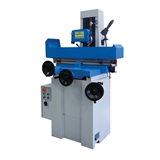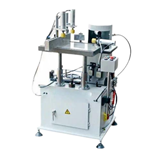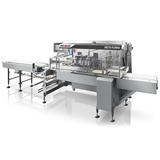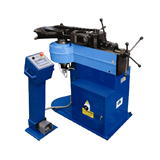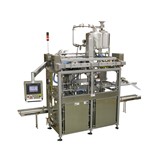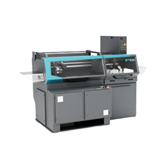Key takeaways
- Circular economy shift: Australia is moving from “take, make, dispose” to a model focused on extending equipment lifecycles and reducing waste.
- Cost benefits: Maintenance, refurbishment, and recycling can cut procurement costs by up to 30% and improve asset performance.
- Regulatory drivers: The National Circular Economy Framework targets doubling Australia’s circularity by 2035, creating compliance and funding opportunities.
- New opportunities: Refurbishment and resale markets are growing, offering businesses fresh revenue streams and sustainability gains.
- Technology enablers: IoT, predictive maintenance, 3D printing, and blockchain help track, manage, and extend equipment lifecycles.
- Industry leaders: Construction, manufacturing, agriculture, and mining are adopting modular designs, reuse strategies, and closed-loop supply chains.
- Key challenges: Limited recycling infrastructure, complex regulations, and upfront costs, especially for SMEs, remain hurdles.
- Business advantage: Tracking lifecycle savings and sustainability metrics builds a strong ROI case and strengthens stakeholder trust.
- Next steps: Audit your assets, partner with refurb suppliers, explore product-as-a-service models, and leverage government incentives.
Introduction
Australia’s shift toward a circular economy is reshaping how industries manage equipment lifecycles. Moving beyond the traditional “take, make, dispose” model, this approach focuses on maximising resource efficiency, reducing waste, and extending the usable life of assets.
For businesses, adopting circular practices means rethinking how equipment is designed, maintained, refurbished, and recycled. Rather than discarding machinery at the end of its use, companies can capture more value by repairing, repurposing, and reselling assets.
In Australia, this transition is being accelerated by government regulations, rising raw material costs, and growing sustainability expectations. Businesses that embed circular strategies into their equipment lifecycles can unlock significant advantages, including lower procurement costs, reduced waste, compliance benefits, and stronger sustainability credentials.
Understanding the circular economy in Australia
The circular economy is transforming how equipment is designed, used, and managed across its lifecycle. Instead of following the traditional “use and dispose” model, it focuses on resource efficiency, reuse, and longevity. In Australia, this shift is being shaped by evolving national policies, sustainability targets, and increasing market demand for smarter, more efficient equipment strategies.
Circular economy principles for equipment
In a circular model, equipment lifecycles extend well beyond initial use. The focus is on repair, refurbishment, remanufacturing, and recycling, keeping assets and materials in circulation for as long as possible.
For businesses, this means rethinking how equipment is designed, purchased, and maintained:
- Select durable materials to extend asset life and reduce breakdowns
- Use modular components that simplify repairs and upgrades
- Adopt smarter tracking systems to monitor usage and optimise maintenance schedules
- Consider product-as-a-service models, where suppliers retain ownership and handle servicing
These practices can lower procurement and waste disposal costs, reduce downtime, and enhance overall asset performance while minimising environmental impact.
Distinctive features of the Australian market
Australia’s transition to a circular economy comes with unique challenges and opportunities:
- Vast geography makes equipment recovery and refurbishment logistics more complex
- Limited local recycling infrastructure requires businesses to plan carefully for asset returns
- High replacement costs in sectors like mining, agriculture, and construction drive demand for longer equipment lifespans
- Growing sustainability expectations from investors, regulators, and customers are reshaping corporate strategies
For example, many Australian suppliers are forming closed-loop partnerships with service providers, recapturing, refurbishing, and reusing equipment components within supply chains to reduce waste and maximise value.
Key drivers and policies shaping adoption
Australia is accelerating its transition through supportive policies and frameworks. The National Circular Economy Framework (2024) sets a goal to double national circularity by 2035, focusing on reducing emissions, cutting waste, and improving product design.
Key drivers include:
- Regulatory incentives that promote repair, refurbishment, and recycling
- Government funding for innovation in sustainable materials and equipment design
- Cross-industry collaboration between manufacturers, researchers, and policymakers
Impacts on equipment lifecycles
Extending equipment lifecycles reduces waste, lowers costs, and supports compliance with Australia’s evolving environmental regulations. Businesses achieve this through better design, proactive maintenance, reuse strategies, and emerging technologies that enable circular economy practices.
Lifecycle extension strategies
- Preventive and predictive maintenance – Regular servicing and IoT-enabled monitoring reduce breakdowns, improve efficiency, and prevent costly downtime.
- Repair, refurbish, and remanufacture – Restoring machines or components to near-new condition cuts capital expenditure and reduces raw material demand.
- Reuse and secondary markets – Reselling or redeploying equipment extends its life while helping SMEs comply with policies such as the National Waste Policy 2018.
Design for durability and reuse
- Durable and modular construction – Designing equipment with standardised components and easy-to-replace parts lowers repair costs and extends usability.
- End-of-life planning – Clear labelling for material recycling, take-back schemes, and responsible disposal make circularity more achievable.
- Cross-model compatibility – Using interchangeable parts simplifies maintenance and supports resale or refurbishment.
Emerging technologies enabling circularity
- IoT and data analytics – Predicts equipment failures, optimises servicing, and increases uptime.
- Additive manufacturing (3D printing) – Enables rapid, cost-effective replacement of parts, especially valuable in remote Australian regions.
- Blockchain traceability – Tracks equipment history, maintenance, and refurbishment, supporting compliance with government sustainability policies.
Practical challenges for implementation
Barriers for Australian businesses
- Infrastructure gaps – Limited local facilities for refurbishing and recycling restrict adoption.
- Cultural resistance – A “take-make-waste” mindset still dominates some sectors.
- SME resource constraints – Smaller businesses often lack expertise and funds to redesign processes or track lifecycles.
Compliance and regulatory complexities
- Fragmented regulations – Inconsistent waste and product standards across states increase administrative burdens.
- Unclear refurbished equipment standards – Legal uncertainty around warranties and product safety slows adoption.
- Lagging frameworks – Policy updates often trail behind technological advances.
Supply chain constraints
- Limited transparency – Difficulty tracing parts sourced from overseas suppliers complicates closed-loop systems.
- Disruptions and delays – Global shipping challenges and shifting trade policies affect equipment availability and refurbishment efforts.
- High implementation costs – Digital tracking tools and supplier collaboration require significant upfront investment.
Leading industry solutions and case studies
Australian industries are increasingly adopting circular economy principles to extend equipment lifecycles, reduce waste, and unlock cost savings. By integrating procurement, remanufacturing, and resource-efficient practices, businesses are achieving both environmental and financial benefits.
Sector examples driving adoption
- Construction and manufacturing – Modular construction firms now use recycled steel, reusable components, and disassembly-friendly designs to cut waste and extend asset life.
- Agriculture – Farmers increasingly refurbish and upgrade equipment rather than replace it, reducing capital costs and environmental impact.
- Textiles and packaging – Closed-loop recycling systems are emerging, where materials are collected, processed, and reintegrated into production.
- Local government support – State and federal programs provide incentives and frameworks that encourage waste reduction, remanufacturing, and resource efficiency.
These examples show how circular practices are being embedded into operations to achieve sustainability targets and improve competitiveness.
Procurement and remanufacturing best practices
Businesses leading in circular adoption focus on strategic procurement and asset lifecycle optimisation:
- Prioritising refurbished and remanufactured equipment to reduce upfront costs.
- Implementing take-back programs where suppliers reclaim used equipment for remanufacture.
- Using data-driven asset tracking to decide when to repair, refurbish, or replace machinery.
- Training staff in maintenance and repair to maximise equipment longevity.
- Setting clear quality and warranty standards to ensure remanufactured equipment meets performance expectations.
These practices improve operational efficiency while embedding sustainability into supply chains.
Real-world outcomes and lessons learned
Australian companies adopting circular strategies report:
- Cost savings – Remanufactured machinery can cut capital expenditure by up to 30%.
- Lower waste and emissions – Extending equipment lifecycles reduces environmental impact.
- Improved brand value – Meeting sustainability targets strengthens stakeholder trust.
Industrial sectors most impacted by the circular economy
The circular economy is reshaping how Australian industries manage resources, particularly in sectors with high equipment intensity, long asset lifecycles, or substantial material use. Some industries are experiencing the greatest impact:
Construction
- Drivers: High material consumption, modular building trends, and regulatory pressure for sustainable infrastructure.
- Impact: Companies are increasingly using reusable components, modular construction techniques, and recycled materials (e.g., steel, timber). Equipment like cranes, concrete mixers, and modular units are refurbished or upgraded rather than fully replaced.
- Benefit: Reduces waste, lowers procurement costs, and supports compliance with sustainability reporting.
Mining and resources
- Drivers: Expensive heavy machinery, remote operations, and environmental obligations.
- Impact: Equipment such as excavators, haul trucks, and drilling rigs undergo refurbishment, predictive maintenance, and remanufacturing to extend operational life. Asset tracking technologies ensure efficient use and reduced downtime.
- Benefit: Significant savings in capital expenditure and reduced dependence on imported components.
Manufacturing
- Drivers: Resource-intensive processes, energy costs, and consumer demand for sustainable products.
- Impact: Manufacturing plants adopt circular practices by repairing, remanufacturing, and repurposing machinery. Modular equipment and IoT-enabled predictive maintenance reduce breakdowns and extend operational life.
- Benefit: Improved asset utilisation, lower maintenance costs, and enhanced ESG credentials.
Agriculture
- Drivers: High-cost machinery, seasonal production cycles, and environmental stewardship.
- Impact: Tractors, harvesters, and irrigation systems are increasingly refurbished or retrofitted. Farmers participate in take-back schemes and adopt standardised components to reduce spare-part costs.
- Benefit: Extends equipment lifespan, reduces operational costs, and aligns with sustainable farming initiatives.
Logistics and transport
- Drivers: Growing fleet sizes, fuel costs, and regulatory pressure on emissions.
- Impact: Trucks, forklifts, and trailers are maintained with a circular mindset — repair, refurbishment, and part reuse. Telematics and IoT enable predictive maintenance and fuel efficiency tracking.
- Benefit: Cost savings, reduced environmental footprint, and compliance with emissions standards.
Future outlook and next steps for Australian decision-makers
The Australian equipment sector is moving steadily toward circular practices due to rising material costs, supply risks, and tighter environmental regulations. Businesses that invest early gain advantages in compliance and market positioning.
Decision-makers should prioritise pilot programs to test circular approaches, supported by digital tools like asset tracking and predictive maintenance. Partnering with suppliers who share circular values can also extend equipment lifecycles.
It is advisable to stay informed on evolving policies and incentives, such as government grants for sustainable innovations. This proactive approach enables companies to plan investments and differentiate themselves in a competitive market.



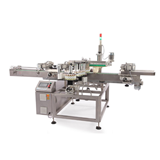
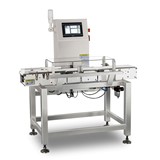
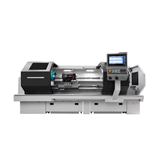

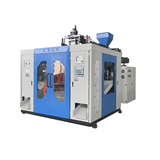

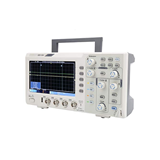

-160x160-state_article-rel-cat.png)

-160x160-state_article-rel-cat.jpg)
-160x160-state_article-rel-cat.png)

